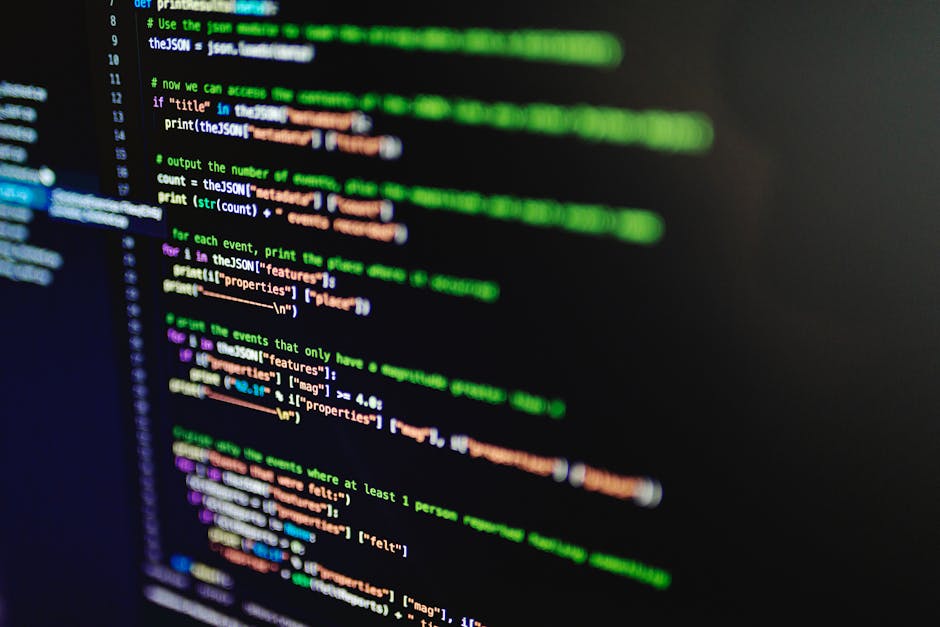Mastering Python Compilation: A Tutorial Guide
Python, known for its readability and ease of use, is often perceived as an interpreted language. However, the reality is more nuanced. Python code undergoes a compilation process to bytecode before execution, a crucial step often overlooked. This article delves into the world of Python compilers, exploring their role in optimizing code, enhancing performance, and bridging the gap between human-readable code and machine execution, drawing insights from resources like Tutorialspoint to provide a comprehensive guide.
Background: Python’s Compilation Process

While Python is commonly referred to as an interpreted language, it internally involves a compilation step. This compilation transforms the source code into an intermediate representation called bytecode. The Python Virtual Machine (PVM) then executes this bytecode. Understanding this process is essential for optimizing Python code and improving its performance.
Bytecode: The Intermediate Language
Bytecode is a set of instructions that the Python Virtual Machine can understand and execute. It’s a lower-level representation of the source code, making it more efficient for the interpreter. This intermediate step allows Python to achieve a balance between portability and performance.
The Role of the Python Virtual Machine (PVM)
The PVM acts as an abstraction layer between the bytecode and the underlying operating system. It interprets the bytecode instructions, translating them into machine code that the CPU can execute. Different Python implementations (e.g., CPython, Jython, IronPython) have their own PVM implementations.
Importance: Why Python Compilation Matters

Understanding Python’s compilation process is not just academic; it has practical implications for writing more efficient and performant code. Ignoring this aspect can lead to suboptimal execution and wasted resources.
Optimization Opportunities
By understanding how Python compiles code, developers can identify potential bottlenecks and optimize their code accordingly. For instance, knowing how loops and function calls are handled can guide decisions about code structure and algorithm selection.
Performance Enhancement
Although Python’s compilation to bytecode doesn’t produce machine code directly, it still contributes to performance improvements compared to purely interpreted languages. The PVM can execute bytecode more efficiently than parsing and executing source code directly each time.
Cross-Platform Compatibility
The bytecode format provides a degree of platform independence. The same bytecode can be executed on different operating systems, as long as a compatible PVM is available. This contributes to Python’s widespread adoption across various environments.
Benefits: Advantages of Python’s Compilation Model

Python’s compilation model offers several benefits, contributing to its popularity and versatility. These benefits range from increased execution speed to improved code security.
Faster Execution Speed
While Python isn’t as fast as compiled languages like C++, the bytecode compilation step helps speed up execution. The PVM can execute bytecode instructions much faster than interpreting source code directly, especially for computationally intensive tasks. This is a primary advantage for developers who need more performance than a pure interpreter provides.
Improved Code Security
Bytecode can be more difficult to reverse engineer than source code, providing a basic level of code security. This is particularly useful for distributing Python applications where source code confidentiality is important. Note that this is not a foolproof security measure, but it adds a layer of protection.
Enhanced Modularity
The compilation process allows for easier modularization of code. Modules can be compiled independently and then imported into other programs. This promotes code reuse and makes it easier to manage large projects.
Steps/How-to: Compiling Python Code

While the Python compilation process is largely automatic, developers can take steps to influence and control it. Understanding these steps can empower developers to optimize their code and troubleshoot potential issues.
Automatic Compilation
When you run a Python script, the interpreter automatically compiles the source code to bytecode. This process is typically hidden from the user. The compiled bytecode is usually stored in .pyc files (or __pycache__ directories in Python 3.x) for faster loading in subsequent runs.
Using the `compile()` Function
Python provides a built-in `compile()` function that allows you to explicitly compile source code into a code object. This can be useful for dynamic code generation or for pre-compiling code for performance reasons.
source_code = "print('Hello, world!')"
code_object = compile(source_code, '<string>', 'exec')
exec(code_object)
Using `py_compile` Module
The `py_compile` module provides functions for compiling Python source files. This module is useful for automating the compilation process as part of a build process or for ensuring that all modules in a project are compiled.
import py_compile
py_compile.compile('my_script.py') # Creates my_script.pyc or my_script.pyo
Disassembling Bytecode with `dis` Module
The `dis` module allows you to disassemble Python bytecode, providing insights into the low-level operations performed by the PVM. This is invaluable for understanding how Python code is executed and for identifying performance bottlenecks.
import dis
def my_function():
x = 10
y = 20
return x + y
dis.dis(my_function)
Examples: Practical Applications of Python Compilation

The principles of Python compilation can be applied to various practical scenarios. Here are a few examples illustrating how understanding this process can lead to better code.
Optimizing Loop Performance
Loops can be a significant performance bottleneck in Python code. By understanding how loops are executed, developers can optimize them. For example, minimizing the number of operations within a loop or using vectorized operations with NumPy can significantly improve performance. Carefully choosing data structures for iteration can also have a major impact.
# Inefficient loop
my_list = [i for i in range(100000)]
result = []
for item in my_list:
result.append(item * 2)
# More efficient list comprehension
result = [item * 2 for item in my_list]
Caching Function Results
If a function performs computationally intensive tasks and is called repeatedly with the same arguments, caching the results can improve performance. This avoids redundant calculations. The `functools.lru_cache` decorator provides a convenient way to cache function results.
import functools
@functools.lru_cache(maxsize=None)
def fibonacci(n):
if n <= 1:
return n
return fibonacci(n-1) + fibonacci(n-2)
print(fibonacci(30))
Using Compiled Modules (e.g., Cython)
For computationally intensive tasks, consider using compiled modules like Cython. Cython allows you to write Python-like code that is compiled to C, resulting in significant performance improvements. This provides the best of both worlds: the ease of Python syntax and the speed of C execution.
# Cython example (requires Cython installation)
# my_module.pyx
# cdef int a = 10 # Declare variable types for efficiency
# def my_function(int x):
# return x * a
Strategies: Techniques for Efficient Python Code

Several strategies can be employed to write efficient Python code that leverages the compilation process effectively. These strategies focus on minimizing overhead and maximizing the utilization of the PVM.
Profiling Code to Identify Bottlenecks
Before attempting to optimize code, it’s essential to identify the areas that are actually causing performance problems. Python provides profiling tools (e.g., `cProfile`) that can help you pinpoint bottlenecks. Profiling helps focus optimization efforts where they will have the greatest impact.
import cProfile
def my_program():
# Your code here
pass
cProfile.run('my_program()')
Using Built-in Functions and Libraries
Python’s built-in functions and libraries are often highly optimized. Using these functions instead of implementing your own versions can significantly improve performance. These built-ins are often written in C and benefit from low-level optimizations.
Minimizing Object Creation
Object creation can be a relatively expensive operation in Python. Minimizing the number of objects created can improve performance. This can be achieved by reusing existing objects or by using data structures that are more efficient for certain operations.
Choosing the Right Data Structures
The choice of data structure can have a significant impact on performance. For example, using a set for membership testing is much faster than using a list. Understanding the performance characteristics of different data structures is crucial for writing efficient code.
Challenges & Solutions: Addressing Common Issues
While Python’s compilation model offers several benefits, it also presents certain challenges. Understanding these challenges and their solutions is crucial for developing robust and performant applications.
Global Interpreter Lock (GIL)
The Global Interpreter Lock (GIL) is a mechanism that allows only one thread to hold control of the Python interpreter at any one time. This can limit the performance of multi-threaded Python programs, especially those that are CPU-bound.
Solution: Use multiprocessing instead of multithreading for CPU-bound tasks. Multiprocessing bypasses the GIL by creating multiple processes, each with its own interpreter.
Memory Management
Python’s automatic memory management can sometimes lead to performance issues if not handled carefully. Excessive memory allocation and deallocation can put a strain on the garbage collector, leading to slowdowns.
Solution: Use memory profiling tools to identify memory leaks or excessive memory usage. Optimize code to minimize object creation and deallocation. Consider using generators for large datasets to avoid loading everything into memory at once.
Understanding Bytecode Optimization
While Python compiles to bytecode, not all bytecode is created equal. Certain coding patterns can result in less efficient bytecode, leading to performance degradation.
Solution: Use the `dis` module to inspect the generated bytecode and identify potential areas for improvement. Focus on optimizing loops, function calls, and data structure usage.
FAQ: Common Questions About Python Compilers
Here are some frequently asked questions about Python compilers and their role in the language’s execution model.
Q: Is Python a compiled or interpreted language?
A: Python is both. It compiles to bytecode, which is then interpreted by the Python Virtual Machine.
Q: What is bytecode in Python?
A: Bytecode is an intermediate representation of Python source code, executed by the Python Virtual Machine.
Q: Where is the bytecode stored?
A: Bytecode is stored in .pyc files (or __pycache__ directories in Python 3.x).
Q: How can I view the bytecode generated from my Python code?
A: Use the `dis` module to disassemble Python bytecode.
Q: Can I directly compile Python code to machine code?
A: While Python itself compiles to bytecode, tools like Cython allow compiling Python-like code to C, which can then be compiled to machine code.
Conclusion: Optimizing Python Through Compilation Awareness
Understanding Python’s compilation process is paramount for writing efficient and performant code. Although Python is often perceived as an interpreted language, its internal compilation to bytecode plays a crucial role in optimizing execution. By leveraging the techniques and strategies discussed in this article, drawing from resources like Tutorialspoint, developers can unlock the full potential of Python and build applications that are both readable and highly performant. Now that you understand the concepts, start experimenting with code profiling and optimization techniques to improve your Python applications! Dive deeper into the `dis` module and explore Cython for computationally intensive tasks. The journey to mastering Python performance starts with understanding its compilation process.

